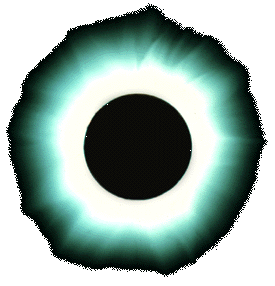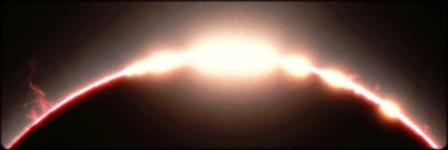|
If you can draw your
eyes away from the sun for a few moments, you will notice that
it has become quite dark, comparable to twilight, and that the
brighter stars and planets have come out. The horizon
(if you have a good long-distance view) has a beautiful orange
cast to it—like it's sunset all around, which it is! These are
portions of the earth still in the brighter "penumbra."
The area of the earth out there in the penumbral regions are
experiencing a partial eclipse, but still are brightly illuminated
by at least a portion of the sun's blazing photosphere. These
areas are far enough away that the light's trip through the
earth's atmosphere colors the distant scene yellow and orange,
just like at sunset.
|







